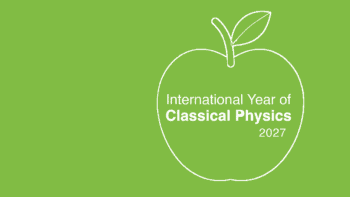
The US physicist Charles Townes, who shared the 1964 Nobel Prize for Physics for his work that led to the development of the laser, has died at the age of 99. Townes played an integral part in the race to make the first laser by developing its forerunner – the “maser” – which could produce and amplify electromagnetic radiation in the microwave region of the spectrum.
Townes’ key work began while he was at Columbia University in the early 1950s, when he proposed a device that could produce coherent electromagnetic waves through amplification by stimulated emission. He coined the term “microwave amplification by stimulated emission of radiation” – or maser – although Townes was not the only person to have the idea. Independently, and at a similar time, Nikolay Basov and Alexander Prokhorov of the Lebedev Physical Institute of the Russian Academy of Sciences, and Joseph Weber of the Catholic University of America, had also been working on the theoretical framework behind the maser.
In 1954 it was Townes and his team who turned their theory into a working device by using a stream of energized ammonia molecules to produce amplification of microwaves at a frequency of about 24 GHz. But it was in December 1958 that Townes and his brother-in-law Arthur Schawlow, who was then at Bell Labs in New Jersey, described how the maser concept could be extended into the optical regime, to make the first “infrared and optical maser” – in other words, a laser (Phys. Rev. 112 1940).
However, the pair were mainly interested in developing the laser for spectroscopic studies so tried to build a continuous – rather than a pulsed – device. It was not until 1960 that the physicist and engineer Theodore Maiman of Hughes Research Laboratories managed to build the first working laser by generating pulses of coherent light from a fingertip-sized lump of ruby illuminated by a flash lamp (Nature 187 493).
Work on the maser led to Basov, Prokhorov and Townes being awarded the 1964 Nobel Prize for Physics for their “fundamental work in the field of quantum electronics, which has led to the construction of oscillators and amplifiers based on the maser–laser principle”. Townes was awarded half the prize, while Basov and Prokhorov shared the other half. “Townes was a giant and an inspiration,” says optical physicist John Dudley, president of the European Physical Society.
“Beyond his own remarkable achievement across many different branches of physics, perhaps an equally important legacy are the careers and contributions of the many scientists that Charles Townes supervised and mentored,” says optical physicist Miles Padgett from the University of Glasgow. “These successes include, for example, Arno Allan Penzias who himself won the Nobel Prize for Physics in 1978.”
A life in physics
Born on 28 July 1915 in Greenville, South Carolina, Townes was just 19 when he graduated in 1935 from Furman University in Greenville with degrees in physics and modern languages. After then completing a Master’s degree in physics at Duke University, he went on to do a PhD on isotope separation at the California Institute of Technology.
After graduating in 1939, Townes worked at Bell Labs in New Jersey until 1947, before heading to Columbia University, where he also served as director of the Columbia Radiation Laboratory from 1950 to 1952. In 1959 Townes served as vice-president and director of research at the Institute for Defense Analyses (IDA) in Washington, DC – a non-profit organization that advises the US government.
After two years at the IDA, Townes went back to academia, taking a position at the Massachusetts Institute of Technology before going to the University of California, Berkeley in 1967, where he spent the remainder of his career. A practising Christian, Townes was awarded the Templeton Prize for science and religion in 2005. He also published an autobiography, How the Laser Happened, in 1999.
- Check out our free-to-read digital edition of Physics World magazine containing 10 of our best-ever features on the science and applications of light, which we have put together to mark the International Year of Light. It includes “From ray-gun to Blu-ray”, in which Sidney Perkowitz reviews how lasers are now inextricably entwined in our lives



